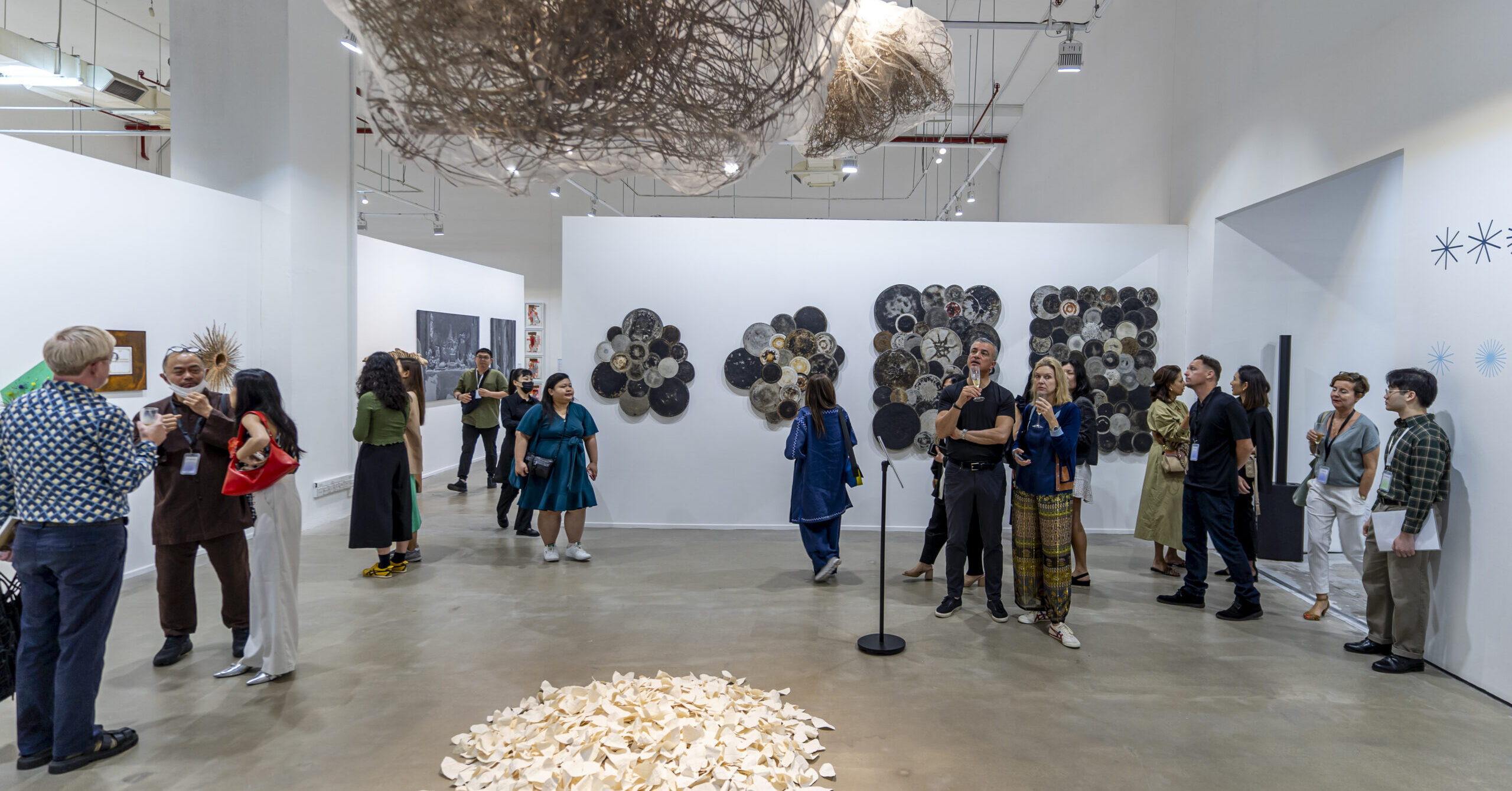‘Mula sa Buwan’ is on a mission to take the already beloved musical to new heights. The result is its most cinematic, streamlined version yet
When “Mula sa Buwan” opened in 2022 to live audiences for the first time since the pandemic, I saw it as the outpouring of the artists’ hearts—an ode to the art of live theater, a tribute to a great love that has returned. At the same time, it spoke of the many themes and truths our local artists stand by in this era: a call to love and freedom, especially amid the threat of a culture of hatred, anger, and censorship.
It was a beautiful message, vibrantly rendered with more period-accurate costumes, a fuller and more well-rounded cast, and a bigger stage such a story deserves. To be honest, I didn’t think “Mula sa Buwan” could get any better than it already was.
But as soon as I entered the now-familiar Samsung Performing Arts Theater, I was reminded of this important fact: Never underestimate the power and passion behind theater-making.
This 2024 iteration of “Mula sa Buwan” has reached an ambitious scale. The imposing edifice that now frames the stage is a clear statement: This is a new and improved “Mula sa Buwan,” unlike anything you’ve seen before.
New energy
One of the key changes in the restaging of this musical is, on paper, subtle but has a massive visual and emotional payoff. The set has become much more realistic. It may well be a character in itself: a stunning 1940s Manila, at the same time ornate and streamlined. Along with the characters, the city is radically transformed as it is plunged into war.
It’s made more realistic, and so it also raises the stakes and the emotional investment. It no longer feels like we are merely watching a play; it’s more like we are witnessing moments in someone’s life.
Many have called this version the best or most definitive “Mula sa Buwan.” But in the spirit of love and defiance (which the musical equally pushes for), I offer a slightly contrary opinion: I wouldn’t call it the best, simply because I now expect it to continue improving upon itself should it get staged again in the future. Instead, I’d like to call the 2024 run of “Mula sa Buwan” as the most cinematic and streamlined version of it yet.
It seems strange (and maybe ironic) to describe a play this way, but thanks to its life-sized sets, the use of projections (clearly showing 1940s Manila landmarks!), and stunning lighting design, I find no better word to use than this.
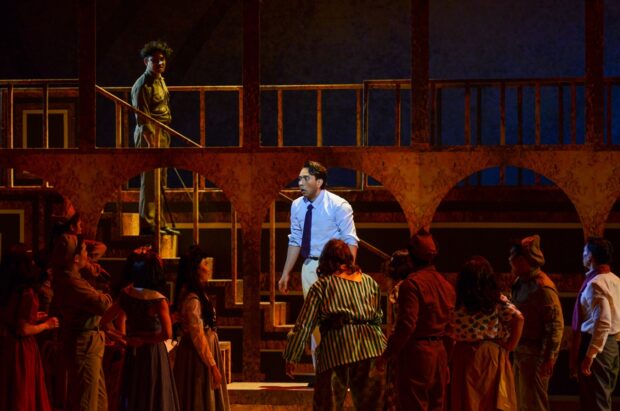
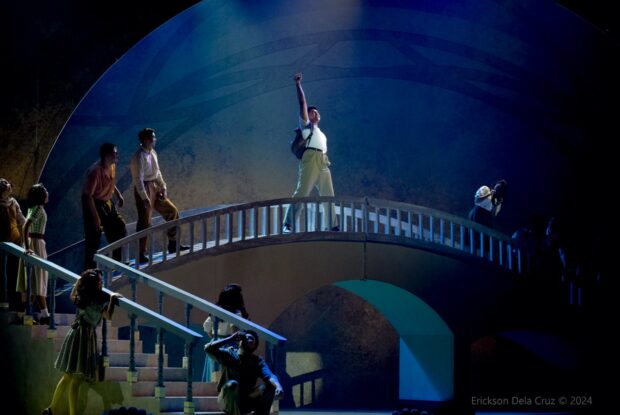
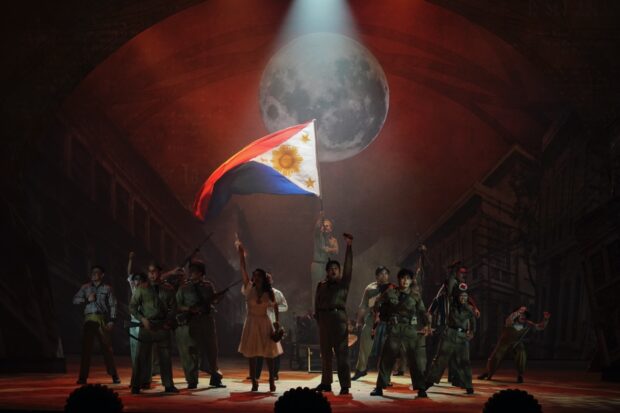

One of my favorite parts of the 2022 version was the fleshing out of the characters, giving more color to each one’s personality, and effectively more weight to their presence in the story. In 2024, this sense of individuality is dialed down (despite the battle cry of being “malayang maging ako”) in favor of a more streamlined story. This isn’t to say that lines or scenes were cut or altered; substantially, it remains mostly the same “Mula sa Buwan” we’ve known. But the nuances in this 2024 run’s approach puts Cyrano back at the center of the story. While most of it still happens just as I remembered it, it also feels fresh.
Though an important bulk of the story is its wartime setting and tragic romance, “Mula sa Buwan” has also been so well-loved for its lighter moments, such as kilig from characters like Gabriel and Tato (whose love story on the side is the rom-com in contrast to Cyrano, Roxane, and Christian’s complicated drama). The wit and humor also remain intact for the most part, with slight tweaks to the punchlines. Cyrano’s is as sharp as ever, but the other characters’ jokes fall short in some scenes.
New cast members also expectedly brought new energy to the show. At the gala, we were blown away by the surprise takeover of Paw Castillo as Cyrano (Myke Salomon was unable to perform that evening). His take on the character was raw and endearing, especially in scenes with Roxane and Christian. What is more pronounced in Castillo’s performance is the heart within Cyrano, the way he connects and relates with others, more than the exuberant energy of a headstrong squad leader and proud artist.
Meanwhile, Jerom Canlas who now takes on the role of Tato plays a delightful contrast to Jillian Ita-as’ Gabriel, and it’s their cutesy-awkward, will-they-get-together, now-they’re-in-love journey that is more enjoyable than Tato as Cyrano’s best friend. (Christian and Cyrano even felt more like closer friends in the performance I’ve seen despite Tato supposedly being Cyrano’s right hand man. It is only in the two cadets’ giddy moments that they seem to connect, but their friendship doesn’t feel as grounded as it should be.)
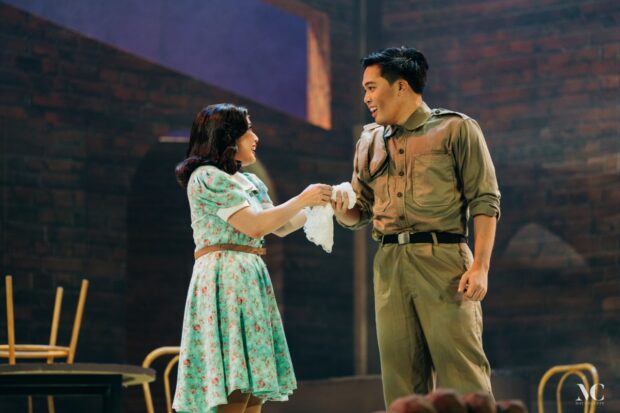
Brian Sy’s take on Maximo captures that air of military nepo baby (I only recently realized this seems to be the perfect description for him); what struck me most about his performance, and what felt most Maximo to me, was seeing his Maximo get caught in the frenzy of the “Mula sa Buwan” number, navigating confusion and awe, to anger and sudden show of authority at the end of the number as they snap back to reality.
Some scenes also took a new direction, such as the Act 2 opener, “Awit ng mga Naiwan.” It is notably a lot less graphic in its depictions of wartime atrocities, but included new parts that added more context and served to make this version more accurate to its setting.
Another new addition to this 2024 run is a reprise towards the end of Act 2. Its inclusion seemed abrupt at first, but makes sense in theory. Harking back to the declaration and reciprocation of love in “Tinig sa Dilim,” the reprise set after Roxane discovers the truth about Christian’s (Cyrano’s) letters, and the latter’s admission of his long kept love, amps up the anguish in the scene as we know Cyrano is about to meet his end.

READ: Must-eats in Makati according to the cast of ‘Mula sa Buwan’
Defiance
In promoting this run, the production emphasized the “defiance” side of the story. It may be easy to assume this means leaning more into its wartime setting, especially if you look at its visual assets, heavy on the shadows and bloody reds (anyone who’s already seen the musical will also notice how reminiscent it is of the Act 1 ender, and the costumes from “Awit ng mga Naiwan,” which opens Act 2 as the story progresses into wartime).
But in hindsight, the choice to restage the musical may well be an act of defiance itself, telling the world that “Mula sa Buwan” is not yet over. It has more to give, and there’s still uncharted territory to explore.
More than defiance as resistance, subversion, or rebellion as the wartime setting may imply, there are more moments of “defiance” we see within the characters themselves, as they become the very faces of this theme.
My favorite, and perhaps most personally heartbreaking of all, is in Cyrano, where we see the defiance of the self, going against his own pride as an artist, allowing someone else to take credit for his voice and his heartfelt work. And perhaps overpowered by love, he defied his own desires by choosing to help his “rival” Christian. (I could never.)


“Ang defiance, hindi lang naman siya sa pagsuway eh,” director Mikko Angeles shares in an interview. “Kung saan ka kinakahon ng mundo, kung saan ka kinakahon ng mga taong nakapaligid sa’yo at meron kang agency to defy kung ano ‘yong sinasabi ng mga tao only because this is what you wanted, doon aalsa ‘yong defiance.”
In this sense, love and defiance truly coexist in this musical. While previously we may have been so enamored by “Mula sa Buwan”’s heartwrenching arc of love hidden, found, and lost, its myriad instances of defiance, both subtly implied and strongly expressed, have been under our noses this entire time.
–
When we say “shoot for the moon,” it often implies aiming for or dreaming of something impossible. “Mula sa Buwan”’s defiance in this sense is the affirmation that you can shoot for the moon—there is no shame in dreaming big, or in dreaming of something vastly different from the norm. This 2024 production itself is proof.
“Mula sa Buwan” runs until Sept. 8 at the Samsung Performing Arts Theater, Circuit Makati. Directed by Mikko Angeles, musical direction by Myke Salomon, choreography by JM Cabling, set design by Ohm David, lighting design by Meliton Roxas Jr., costume design by Bonsai Cielo, video design by Joyce Garcia, property design by Julio Garcia. Book, adaptation, and lyrics by Pat Valera, music and lyrics by William Elvin Manzano. Starring Myke Salomon as Cyrano; Gab Pangilinan as Roxane; MC Dela Cruz as Christian; Jillian Ita-as as Gabriel; Jerom Canlas as Tato; Phi Palmos as Rosanna; Brian Sy as Maximo; Khalil Tambio, Rapah Manalo, Omar Uddin, Jep Go, Ericka Peralejo, Chesko Rodriguez, Lance Reblando, Mikaela Regis, Liway Perez, Ace Polias, Keith Sumbi, Jules Dela Paz, Ade Valenzona, Daniel Wesley, Jannah Baniasia, Cheska Quimno, Dippy Arceo, Iya Villanueva; Paw Castillo as standby for Cyrano; Teetin Villanueva as standby for Roxane and female swing; Rofe Villarino as male swing.





